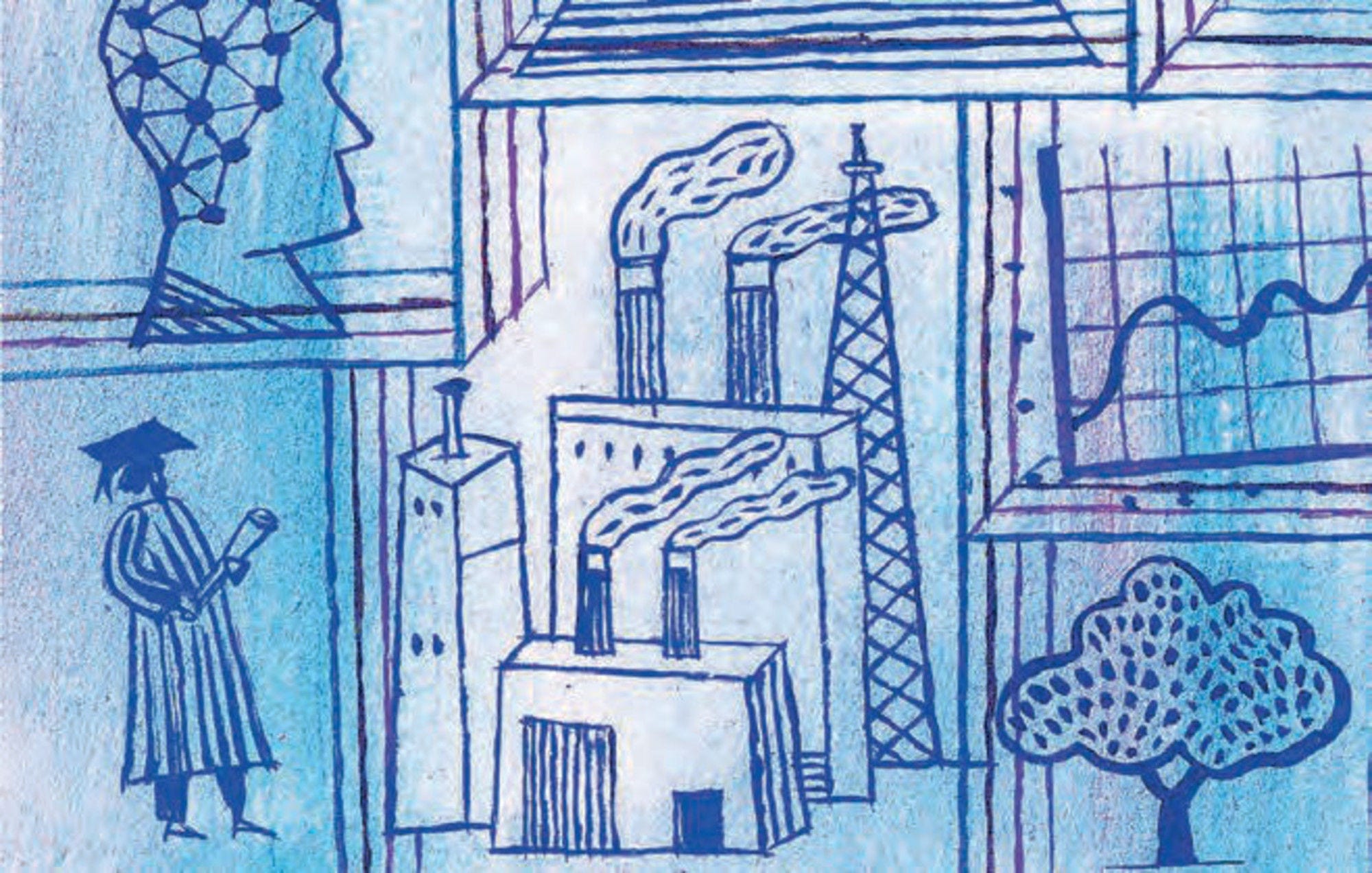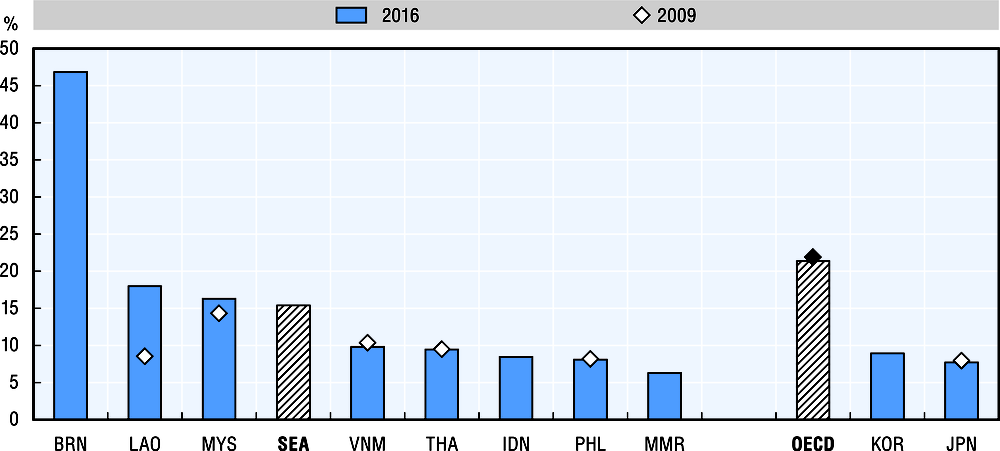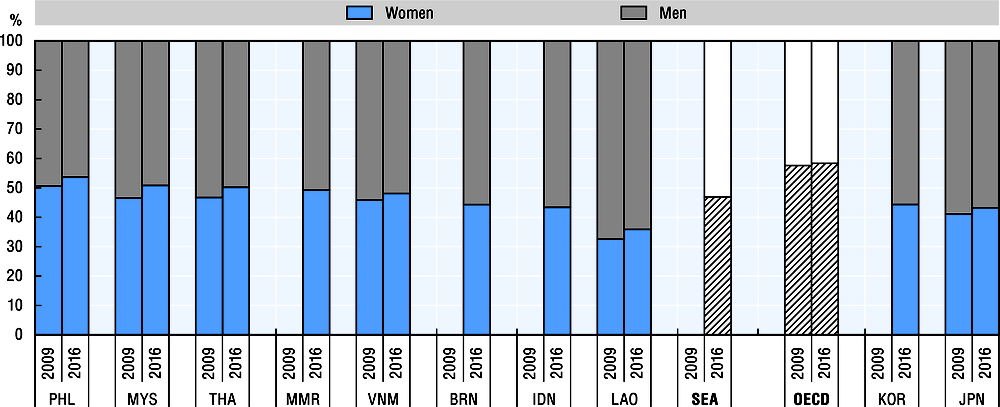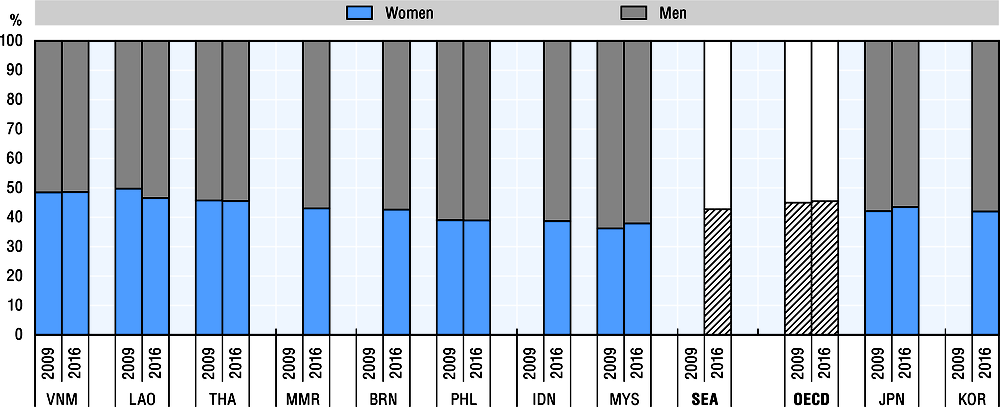Government performance is highly dependent on workforce quality. At the same time, size of public sector employment reflects both societal agreement about the role of government in the economy and society, as well as the way in which public services are delivered – whether through government employees or partnerships with the private or not-for-profit sectors.
Public sector employment as a percentage of total employment for the selected SEA countries was on average 15% in 2016. However, extreme differences exist between the countries, ranging from 47% in Brunei Darussalam to 6% in Myanmar. The SEA average is almost 7 p.p. lower than the average share of public sector employment in total employment in OECD countries, which was 21% in 2016. At the same time, Korea (9%) and Japan (8%) – the two OECD countries for which there is data in the region – have similar shares of public sector employment as half of the SEA countries in 2016. These two countries also have the lowest share of public sector employment out of all OECD countries. Where data is available, between 2009 and 2016, public sector employment as a percentage of overall employment decreased on average by 0.1 p. p. in the Philippines and 0.5 p.p. in Viet Nam. On the other hand, in Malaysia and in Lao PDR this share increased by about 2 p.p. and 9 p.p. respectively over the same period.
Public sector employment that is representative of the population (e.g. making progress towards more equal representation of men and women) is important, as a diversity of views and experiences in the public sector workforce will lead to policies and services that better reflect citizens’ needs. Within the SEA region, there is still a strong culture of women providing family support, childcare and being responsible for other household chores. They also often carry out unpaid work in family businesses. Even in middle-income countries such as Indonesia, the share of employed women in total employment (39%) is lower than that of men (61%). The share of women employed in the total economy in the SEA region (43%) is still lower than that of the OECD average (46%) in 2016.
In terms of having paid employment, public sector work is a key avenue for women. Women and men are almost equally represented in SEA public sector employment. On average, women represent 47% of public sector employment in the SEA countries in 2016. In contrast, in OECD countries on average women represented the majority of the public sector workforce (58% in the same year). However, SEA countries are highly varied in their gender shares of public sector employment. For instance, women represented 43% of employment in the public sector in Indonesia, against 54% in the Philippines in 2016. Where data are available to compare public sector employment by gender between 2009 and 2016, all SEA countries experienced an increase in the percentage of women working in the public sector. This mirrored the trend in Japan and in the OECD average, which also increased over the same period.



